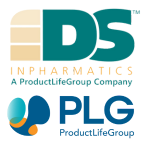Over time, the landscape of chemistry, manufacturing, and controls (CMC) has continued to shift. Only a few decades ago, most drugs were developed from start to finish with well-defined systems of control by large pharma.

Image Credit: DS InPharmatics
Today, this has changed significantly; the majority of early development (Pre-IND to Phase II) work is carried out by small- to medium-size emerging biotech sponsors, a lot of which are virtual companies.
The drivers, goals, and challenges which are experienced by these smaller sponsors are much different than their larger counterparts. The goal may be to generate the appropriate interest to sell the IP or the company itself, instead of an end goal of commercializing a new drug.
Rather than a large team of experts who are responsible for drug development, the responsibility falls to a few individuals, and in many instances, just a single person.
For that reason, smaller emerging biotech commonly relies on the expertise of external consultants and contract manufacturing organizations (CMOs) to help design phase appropriate CMC activities which will meet their company’s specific goals.
The challenge for planning these CMC programs is that there is no one-size-fits-all model to be used, each one becomes a custom program. When designing an appropriate program a unique combination of drivers, e.g. Timing, Funding, Guidance, etc. must then be considered.
The funding
Funding is now a key driver for decision making for many virtual or small sponsors. This can often result in conflicts between what development work “should” be carried out and what “has” to be completed.
Some sponsors may focus their efforts on acquiring the funding instead of the development or regulatory drivers. In these instances, development work that may be needed for regulatory approval or studies which would aid in the longer-term development goals are delayed for a later point.
Development activities may be given a finite amount of funding which cannot be exceeded, acquiring only the bare minimum requirements, while delaying or foregoing work that may be advantageous in the longer term in a constrained funding scenario, which can impact both small and large companies.
The respective regulatory agency must have a degree of confidence in the level of information surrounding the production of the drug substance and formulated product for any initial investigational application to be accepted and then advanced, with increasing substantiation as the development project progresses.
From a drug substance perspective, for ultimate marketing approval information about the synthesis or fermentation process, characterization and proof of structure, testing methodologies and stabilities is vital to be included in the application or submission package.
Likewise, formulations must be determined, set and manufactured for the drug product. Testing methodologies and stabilities with phase appropriate data have to be assessed and included.
The regulatory guidance
Ultimately, funding drives data and the path for CMC requires expertise, knowledge, and agreement. Regulatory agencies in Europe and the U.S. require the CMC section of applications and submissions to have detailed information regarding the drug substance and the formulated product in which the active will be administered.
The development goals of many virtual or smaller companies today may fall short of commercialization. Numerous companies know that they will not have enough funding to support the commercialization of their product.
Before entering into a co-development agreement with a larger pharmaceutical company or selling the company (or the drug) to another company to continue the development, these companies use a development strategy to bring the drug to a certain point within the development cycle.
In these instances, the focus may not be on the regulatory requirements, the funding, or long-term developmental requirements, but rather the data and studies required to entice a buyer or partner. This strategy often complicates the design of an appropriate CMC program.
FDA has a number of guidances which can be utilized to shape the program to meet expectations, including FDA’s Current Good Manufacturing Practice for Phase 1 Investigational Drugs Guidance for Industry, and INDs for Phase 2 and Phase 3 Studies Chemistry, Manufacturing, and Controls Information.
Yet, guidance for early phase CMC support particularly is limited so it is not uncommon to find sponsors that are not taking advantage of the phase-appropriate approach.
This guidance encourages the utilization of a phase-appropriate approach and provides a limited foundation for expectations of what is required for different clinical phases. While the FDA guidance encourages the utilization of a phase-appropriate approach, they lack any specific details of the binding requirements and timing.
For example, the drug substance process in early development could be enough for Phase I but for Phases II and III it may have to be scaled up and optimized, which will likely result in a new impurity profile versus the Phase I material. In many cases only a few batches are expected to be produced For the Phase I material.
At the same time, FDA’s Phase 1 guidance states that analytical techniques are recommended to be “fit for their intended purpose”. The Phase II guidance only states that “appropriate validation data should be available” but does not list specific further criteria.
The development of stability-indicating techniques can be lengthy and expensive, leading to the question of whether such testing should be carried out for early-phase clinical materials.
Must emerging biotech and pharma spend the time and effort to develop and validate a stability-indicating technique, knowing that after being applied to only one or two batches of drug substance it may need to be redeveloped?
Sadly, when they had to redevelop the method to address changes, a lot of sponsors who have taken a conservative approach and answered “yes,” wasted time and money. Others having avoided the question completely have dealt with the alternative consequences.
It is crucial to assess the development drivers regarding the program. What attributes would be required to ensure that the technique is fit for purpose as applied to an early-phase program? Depending on the specifics on the product and application of the method, the answer will vary.
Method development should start as early in the process as possible for the phase-appropriate approach; yet, understand the intent of the technique is to be applied to early-phase material in addition to the normal “intent of the method” questions.
Timing and outsourcing
Lastly, such development activities are contracted out to a CMO for many small emerging biotech. Sponsors using such contractors must realize that the CMC work being performed could be on the critical path unless a CMO is chosen and managed with care.
Without proper CMC strategy and vigilant oversight during execution of CMC-related tasks, delays at the CMO in the development process will majorly impact the timely supply of both materials and information to support an application.
A company should place high priority on managing its interaction with their CMO throughout. With competing timelines and resources between itself and other clients in the queues, it is not uncommon, yet, understandable that timelines within a CMO can and do slide.
Final thoughts
A successful strategy requires evaluation of the company’s individual drivers and goals together with the specific requirements of the product being developed, it cannot be accomplished with a one-size-fits-all model.
In a hugely competitive environment, sponsors from large pharma to small emerging biotech are always looking for resourceful ways of fast-tracking their development process.
The company itself may need to be willing to accept certain quality responsibilities and their consequences if ‘time’ is key. With each phase of the clinical trial the quantity and type of information vital in the CMC sections of an application differs.
However, it is vital to recognize that in some instances, acquiring more extensive data prior to Phase III studies moving towards commercialization can be more efficient and productive and can even help decrease overall timelines.
Designing a phase-appropriate CMC strategy can be vital to the success of a small or virtual sponsor. The successful program will balance multiple drivers to supply a program which meets the overall development goals without sacrificing the requirements of the program.
Acknowledgments
Produced from materials originally authored by Edward A. Narke from Design Space InPharmatics.
About DS InPharmatics 
DS InPharmatics (DSI) provides regulatory, technical, and project management consulting services to healthcare product companies that manufacture and/or market pharmaceuticals, biopharmaceuticals, and cellular and gene therapy products.
Since 2007 we have provided our clients with innovative strategies and exceptional quality work products intended to enhance product development, approval, and marketing presence. Whether advocating CMC strategy, directing CMC operations or developing CMC submission content that represent the best interests of emerging biotech, we focus on the critical CMC issues and build programs that enhance development.
In April 2021 we were thrilled to announce that DSI has just become part of ProductLife Group.
French-headquartered ProductLife Group (PLG) is well-known in the Life Sciences market. It has a track record of successfully managing global outsourcing programs and insourcing services for its international client base. The company is on a mission to help transform human health outcomes by optimizing regulatory affairs, safety & vigilance, and quality compliance for life sciences organizations worldwide.
The fit between our two organizations could not be more perfect. We will complement PLG's growing biotech services portfolio. US biotech sponsors recognize DSI as a leader in consulting for go-to-market strategies and RA pre-market consulting. At the same time, PLG has a strong reputation for managing end-to-end outsourcing of regulatory affairs and pharmacovigilance activities worldwide.
Our merger with PLG will harness our combined strengths, offering our clients on both sides of the Atlantic support with their developed drugs approvals and post-approvals compliance, plus advisory services on the best market strategies to deliver a rapid ROI on their development. Together we will offer our clients increased pharmacovigilance capabilities - including a QPPV; pharmacovigilance consulting; and a fully validated safety database - as well as complementary toxicology-related services; RIM/electronic document management services; and support for medical device regulatory requirements.
We see enormous potential in this new chapter for DSI and you, our clients. As a PLG company, we have the opportunity to become part of a global force in life sciences regulatory and compliance solutions and services, and we're incredibly excited to add our momentum to that effort.
Sponsored Content Policy: News-Medical.net publishes articles and related content that may be derived from sources where we have existing commercial relationships, provided such content adds value to the core editorial ethos of News-Medical.Net which is to educate and inform site visitors interested in medical research, science, medical devices and treatments.